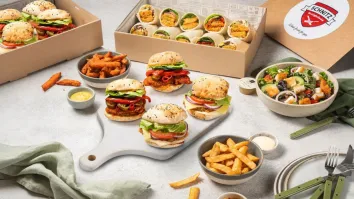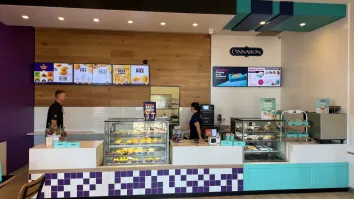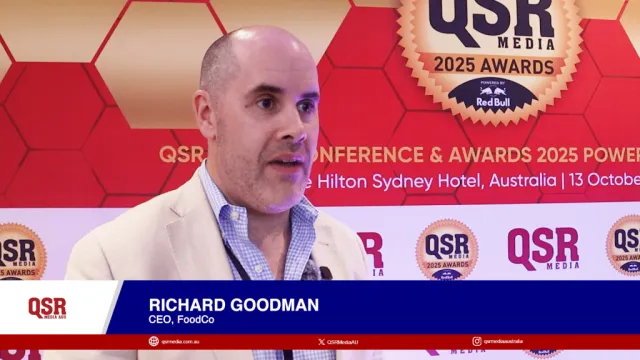
The four key factors impacting the QSR industry
IBISWorld senior industry analyst Tom Youl gives a data-driven overview.
Winning a game means understanding and utilizing its rules to your advantage. In a competitive market like Australia’s foodservice industry, the country’s macroeconomic backdrop is the chessboard in which brands operate. How to make the right moves, as well as how to avoid making the wrong ones, depend on each player’s ability to read the board.
As the country’s general economic development continues to slow down, keeping a close watch on macroeconomic factors such as wage growth, productivity, income growth, and consumer confidence is critical to gaining a competitive edge.
Tom Youl, Senior Industry Analyst at the global market research firm IBISWorld, spoke at the QSR Media Sandhurst Fine Foods Conference & Awards 2019 to give a data-driven overview of the past and projected future performance of the Australian economy and its effects on the QSR industry.
Australia’s slowing economy
In terms of gross domestic product (GDP), Youl noted that Australia has been steadily growing for a record 28 consecutive years, only tapering off in recent years due to a slowing growth in population, ‘sluggish’ wage growth, and limited expansion in business productivity.
Citing data from the Australian Treasury, Youl said that from 2002 to 2014, the ten most productive businesses in Australia reported an average wage growth of 2.8% per year, compared with the 1.7% standard across all other businesses.
Technology plays a huge part in this boost, especially with how much rudimentary tech like smartphones and laptops can improve worker efficiency, which drives many of the country’s workforce towards only the Australia’s most technologically-advanced companies.
“One of the theories behind why wage growth has been slow recently is lag; productivity catching up to wages,” he said.
“Unfortunately, however, productivity growth has been in a bit flat over the past few years. But as wages and productivity meet, we may see an increase in wages across the sharing economy.”
What this sluggish growth in wages means for the foodservice industry is that Australians have less money to spend on restaurants overall. Discretionary income growth, which determines what consumers have to spend on things like dining out and other leisure spending, has declined slightly (by 0.7% per year) over the past five years. This is further compounded by other factors, such as a rising cost to things like electricity, which have a huge impact on many consumers’ daily spending.
Interestingly enough for retailers and any consumer-facing business, the weak growth in discretionary income has not had an effect on household expenditure as a whole.
“It's never declined, since we've been keeping records since about the 1960s. The consumers are spending more year on year,” Youl said.
According to IBISWorld data, more Australians have been going into debt in recent years, with Australian households becoming the second most indebted of any country in the world, behind Switzerland.
“On the positive side, consumers are likely to continue spending as we've never really seen a downturn in the past,” Youl added.
The ever-changing preferences of consumers
Despite consistent spending, consumer demands have undergone drastic changes. Food expenditure statistics gathered by the government found that supermarket prices have generally gone down from 2010 up to 2017, only seeing some pickup in the last two years.
Restaurants and other foodservice establishments comparatively saw faster expenditure growth of around 3% per year over the decade, even as prices remained flat.
"Fifty percent of this rise in expenditures comes from changing consumer taste. So that means consumers are spending more for the same volume of food," Youl said. "And this trend is explained by consumers seeking out higher quality meals, more premium foods, and expecting more from their dining experiences."
The arrival of aggregators like Menulog, Deliveroo, and UberEats, he added, also meant that the way in which consumers ate their food changed almost overnight, from seeing double digit growth in the dining in sector.
"Consumers are now eating inside of inside their home more than ever before. While things have balanced out over the past two years, there was a really quick adjustment over a three year period of 2015 to 2017," Youl said.
"Obviously, this growth is also reflected in the revenue of these food delivery companies: 72% revenue growth per year over the past five years, which is pretty rapid, albeit from a rather low base. That's estimated to be at least $1.6 billion per year."
Is the middle market vanishing?
With the rising trend of premiumization, fears that the market was becoming increasingly polarized have begun to gain traction.
Market polarization, a theory which involves consumers buying the majority of their goods in terms of volume at the budget end of the market, and then supplementing this with a handful of luxury items, posed risks to brands placed towards the middle of the pricing spectrum.
IBISWorld data found that overall consumer goods retailing have posted less than 1% growth per year over the past five years, while fast fashion and luxury retailing both double digit growth per year. Consumer spending in retail is going to the premium and the budget end of the market, with the mid market is suffering losses.
Fortunately, this has not been the case in the foodservice landscape.
"Consumers have shown they're willing to spend more when they dine out... seeking more premium foods and better dining experiences. However, this has been in a lot of ways offset by the sluggish economic conditions which we've seen over the past few years," Youl said.
Because of the difficult landscape, not many premium dining establishments have entered or expanded to meet the demand. Independent operators have also felt the brunt of the economic slowdown, which leads to consumers patronizing newer or well-known brands in the mid market.
"One case of polarization we have seen is more in the way Australians are consuming food. 85% of Australians say they're trying to eat healthy or currently on a diet. However, obesity levels are rising, and we are consuming more food overall. Food consumption is outpacing population growth by about half a percent a year," Youl noted.
In this case, as health consciousness continues to grow, a shift may be happening in consumer preferences towards healthier food choices. The number of food products carrying of a vegan claim almost doubled between 2014 and 2016, data showed.
Shift towards American food
In terms of industry performance, the QSR sector has been growing better than its full-service counterparts, with a recorded 3.3% increase year on year. Expenditure has been growing across all three major food service categories as prices remain flat, suggesting consumer preferences shifting towards volume and premiumization.
Part of the growth could be attributed to burger and chicken shops, which have been performing really quite well as tastes shift towards American food.
"A lot of burger shops have popped up. You can probably tell that anecdotally, there's been a lot of entrances into the industry over the past five years. However, this has come at the expense of the good old Australian fish and chip shop, which has been declining pretty strongly over the past five years. This is just a case of what consumer trends and behavioral patterns can have an effect on an industry level," Youl said.
Third party aggregators also contributed much to the industry's performance this decade.
The negligible changes in prices in the market, meanwhile, are being driven by increased competition from full-service restaurants and supermarkets. Competition from the likes of Coles and Woolworths have been pushing down price growth as they offer more prepared food options for their customers, affecting the QSR segment.
"However, the impending entry of Amazon Fresh into the market, once they enter the fresh produce section, is likely to reinvigorate competition in the industry and place downward pressure on prices over the next few years," Youl said.























